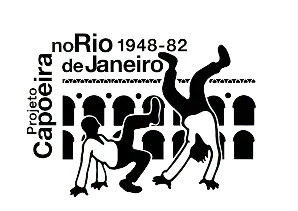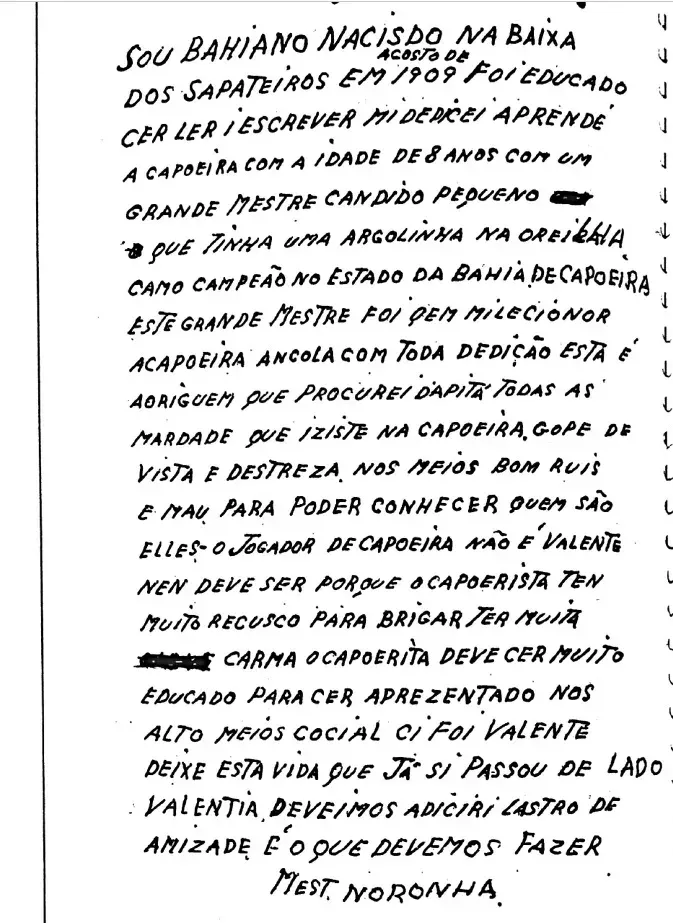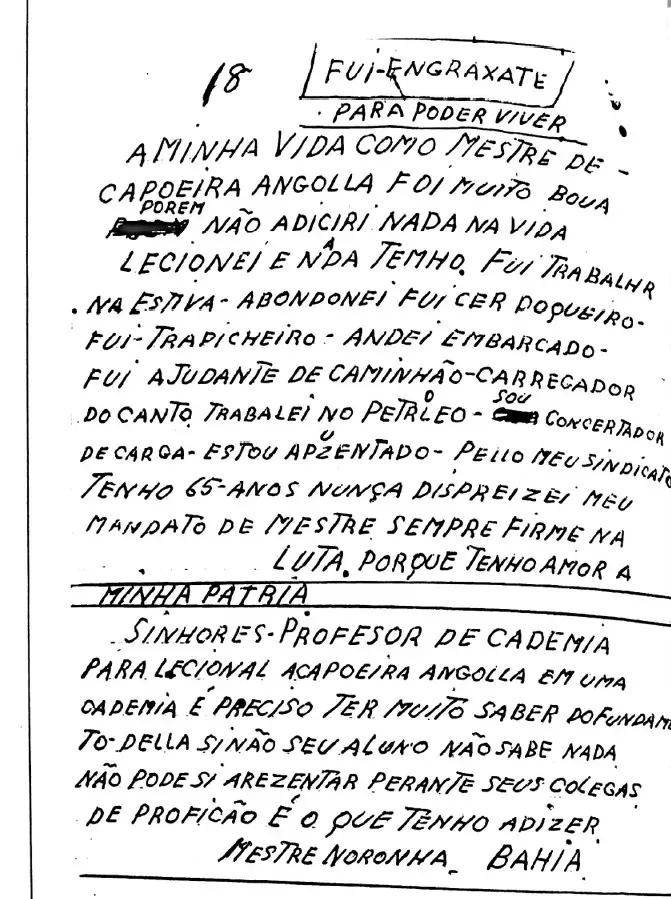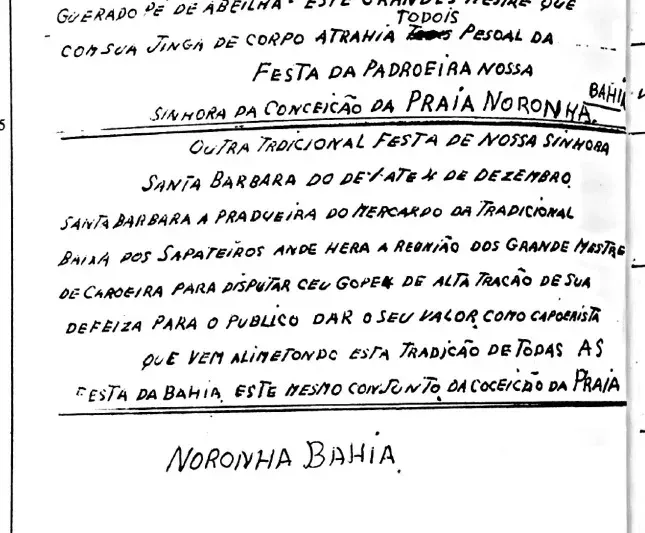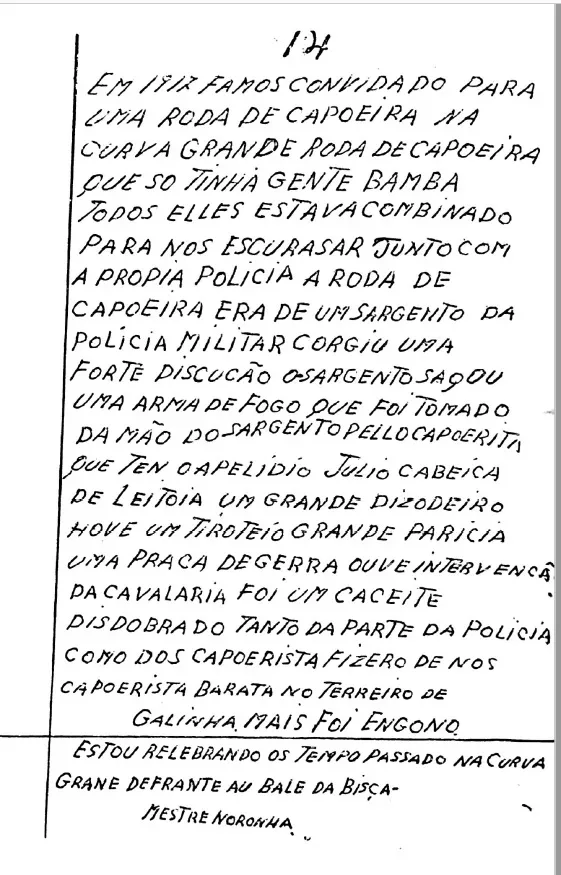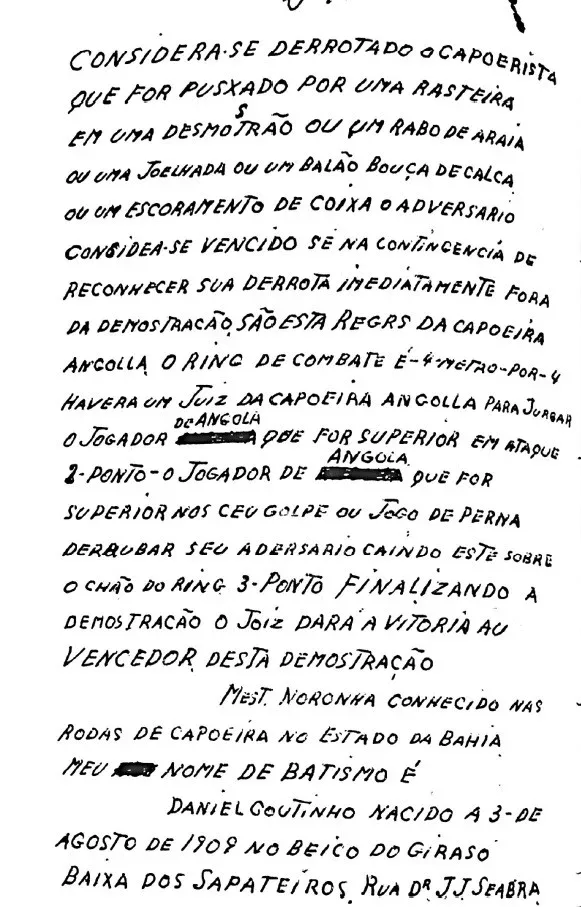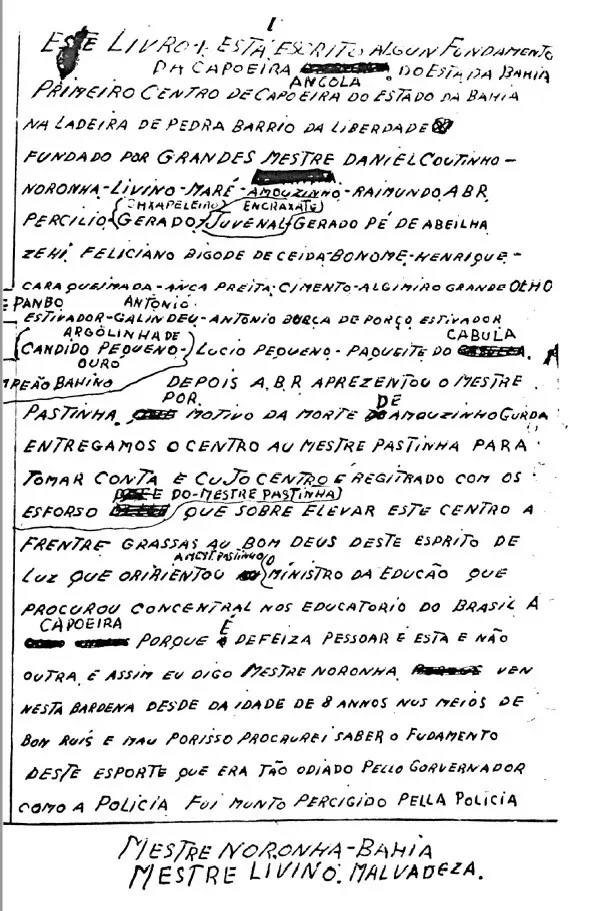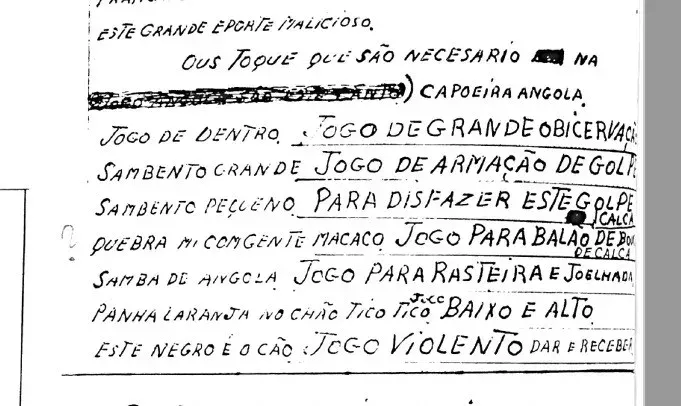Unlike many masters of his generation, Daniel Coutinho, better known as Mestre Noronha, could read and write. It was thus possible for him to leave behind his manuscripts, a precious legacy consisting of a kind of personal journal, published for the first time in 1993 by Fred Abreu. Together with Mestre Pastinha’s writings, Noronha’s manuscripts represent an invaluable source for the history of 20th century capoeira, as there are very few testimonies that provide an insider’s view of Bahia’s capoeira, before the innovations and changes that took place from the 1930s onwards. Written over the years 1974-77, Noronha not only remembers the “baderna”, as he called capoeira in his youth, but also reflects on the evolution of capoeira since then.
From his manuscripts one can see that writing was not something that flowed easily for him, so much so that he wrote everything in capital letters. His spelling also reflects both the old spelling he learned at school (e.g. “elle” instead of “ele”) and the regional pronunciation of Bahia. Nor did M Noronha use punctuation, as if he were transposing his speech directly into writing.
We reproduce here some extracts from his original handwritten notebook, taken from the original published in 1993 by Fred Abreu, and an English translation.
1. Autobiography
2. Autobiography
3. Origin of capoeira
4. Festa do Largo [or Square Celebrations]
5. Roda da Curva Grande, 1917
6. Capoeira Angola Competition Rules
7. Origin of the Capoeira Angola Sports Centre-CECA
8. Interview
9. Rhythms
The toques that are required in capoeira angola:
Jogo de Dentro, game of great observance;
São Bento Grande, a game of arming the blow;
São Bento Pequeno, to undo this blow;
Quebra-me com Gente Macaco, game for balão de boca de calça;
Samba de Angola, game for rasteira and joelhada;
Panha Laranja no Chão Tico-Tico, low and high game;
Este Negro é o Cão: violent game, give and take.
(p. 48)
Know more:
COUTINHO, Daniel. O ABC da Capoeira Angola. Os manuscritos do Mestre Noronha. Com explicações, notas, glossário e anexos de Frederico Abreu. Brasília: DEFER/GDF, 1993.
ASSUNÇÃO, Matthias Röhrig. ‘Uma visão de dentro da vadiação baiana. Os manuscritos do Mestre Noronha e o seu significado para a história da capoeira’. Revista África(s), Núcleo de Estudos Africanos e da Pós-Graduação Lato Sensu em Estudos Africanos e Representações da África, da Universidade do Estado da Bahia (UNEB), Campus II, Alagoinhas, v.1, n.2 (Jul-Dec 2015): 81-100.
PIRES, Antonio Liberac Cardoso Simões. A capoeira na Bahia de Todos os Santos. 1. ed. Goiânia: Editora UFT/Grafsete, 2005.
